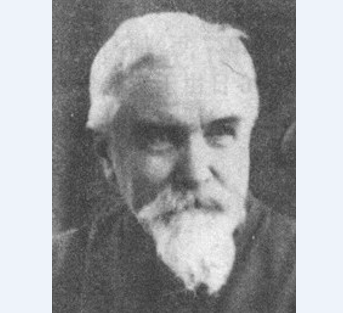Chinese playwright and author Yang Jiang wrote an article called Priest Froc in her book Walk to the Edge of Life. She wrote, “Except my family, my favorite friend when I was a child was Priest Froc... He spoke Shanghainese with a little foreign accent. He talked most with me and was very interesting. He had become my favorite friend.” It recorded the friendship between Mrs. Yang and her best friend, 80-year-old Priest Froc, at the missionary school when she was a teenager.
Yang Jiang's friend "Priest Froc" - Aloysius Froc
Aloysius Froc (1858-1932), with the Christian name Lonis, was a French missionary and the former director ofXujiahui Observatory in Shanghai, also known as the “Father of Typhoon”. He was a good friend of Yang, renowned Chinese literary scholar Qian Zhongshu’s wife. In the ninth year of the Reign of Emperor Guangxu of the Qing Dynasty (1883), he came to China and worked in Xujiahui Observatory as assistant to Director Marc Dechevrens. In 1887, he returned to France to study Catholic doctrine and mathematics and practiced at the local observatory. In 1895, he returned to Shanghai and took over as the director of Xujiahui Observatory in December of the following year. In February 1926, he resigned as president for health reasons and returned to France in 1929.
Mr Froc managed the observatory for more than 30 years. He had twice been to Europe and once to Japan for the World Meteorological Congress. His works on the hydrology of China were published by the Hydrogeography Department of the French Admiralty as a guide for the French Navy in the Far East.
"Father of Typhoon"
In 1883, Aloysius Froc and Marc Dechevrens went to work in Shanghai and Aloysius Froc became the third director of Xujiahui Observatory in 1896. He put the research of typhoon theory into practice and served seafarers at sea. Between 1893 and 1918, he studied the paths of 620 typhoons along the Coast of China, detailing the paths of typhoons that affected China by month, which had a profound impact on navigation and scientific research at that time.
He made more outstanding contributions to meteorology and devoted himself to typhoon research. With the help of others, he set up wind stations along the coast to transmit typhoon information. New regulations on typhoon warnings had been adopted in all parts of East Asia (except Japan and North Korea), benefiting the maritime industry. This has earned him the nickname “Father of Typhoon”. In 1927, the Works Bureau of the Public Concession renamed Observatory Road in the old French Concession to Aloysius Road (now Hefei Road).
Visible weather signal system
Among his many achievements, Priest Froc is better known for a system of visible weather signals. The system was used to provide ships with warnings of changes in the weather, especially severe storms. In the beginning, the signal station of the Bund used flags of different shapes and colors to release meteorological and timing information. Although the flags were bright in color, they also had a defect -- they could not wave when the wind was calm and people could not easily identify them.
During his tenure as director of the station, he continuously improved the signal based on the opinions of the captains and sailors. In order to ensure that people get the same signal from a different direction in the air, he used symbols with different shapes such as circles and cones to represent 10 digits. The direction of typhoon movement adopted the compass form, which was familiar to sailors, with 32 directions represented by digits, forming a set of “signal symbols for Bund signal towers”.
In 1920, Mr. Froc introduced the system at meteorological conferences in Austria and Hong Kong. In 1898, The Chinese Customs decided to use the Bund code in all its lighthouse stations. Since March 1, 1931, ports belonging to customs in all East Asian countries (except North Korea) have been marked by this system. It was also the source of modern weather warning labels. The “Blue Yellow Orange Red” warning used in Shanghai and the tropical cyclone warning signal used in Hong Kong were both derived from the Bund system.
Reference materials: Baidu Encyclopedia, Wikipedia, thepaper.cn, and Shanghai Local Chronicle
- Translated by Nicolas Cao












